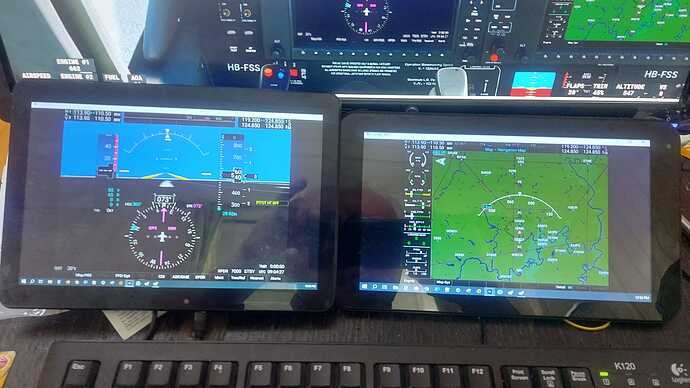The evolution of my “cockpit”, such as it is.
I have added Spacedesk and two inexpensive, (obsolete), tablets that I have laying around that aren’t useful for anything else. (In fact, I had to “side-load” an updated version of Google Play just to download Spacedesk!)
The problem I am trying to solve is the fact that “glass cockpits” are essentially useless to me because the screens are too small for my ancient eyes to see. Spacedesk allows me to create two additional Windows displays on the two tablets and then I can move “detached” views of each of the two screens to the tablet - where they are much larger and easier to see.
Drum roll please!
This is the overall layout.
These are the screens up-close. Note the enlarged view which makes the “glass screens” easier to see and use.
One issue:
It appears that any control buttons that might appear on a detached instrument, as is shown on the following picture. . .
(This is a different cockpit with different “glass” instruments. Note the control buttons on the top of the two external screens.)
On the composite control panel, these buttons are active controls that you can select - but on the detached images of these instruments the control buttons do not work. Neither do they work if they are still on the main screen.
Is there a way to make them work?



